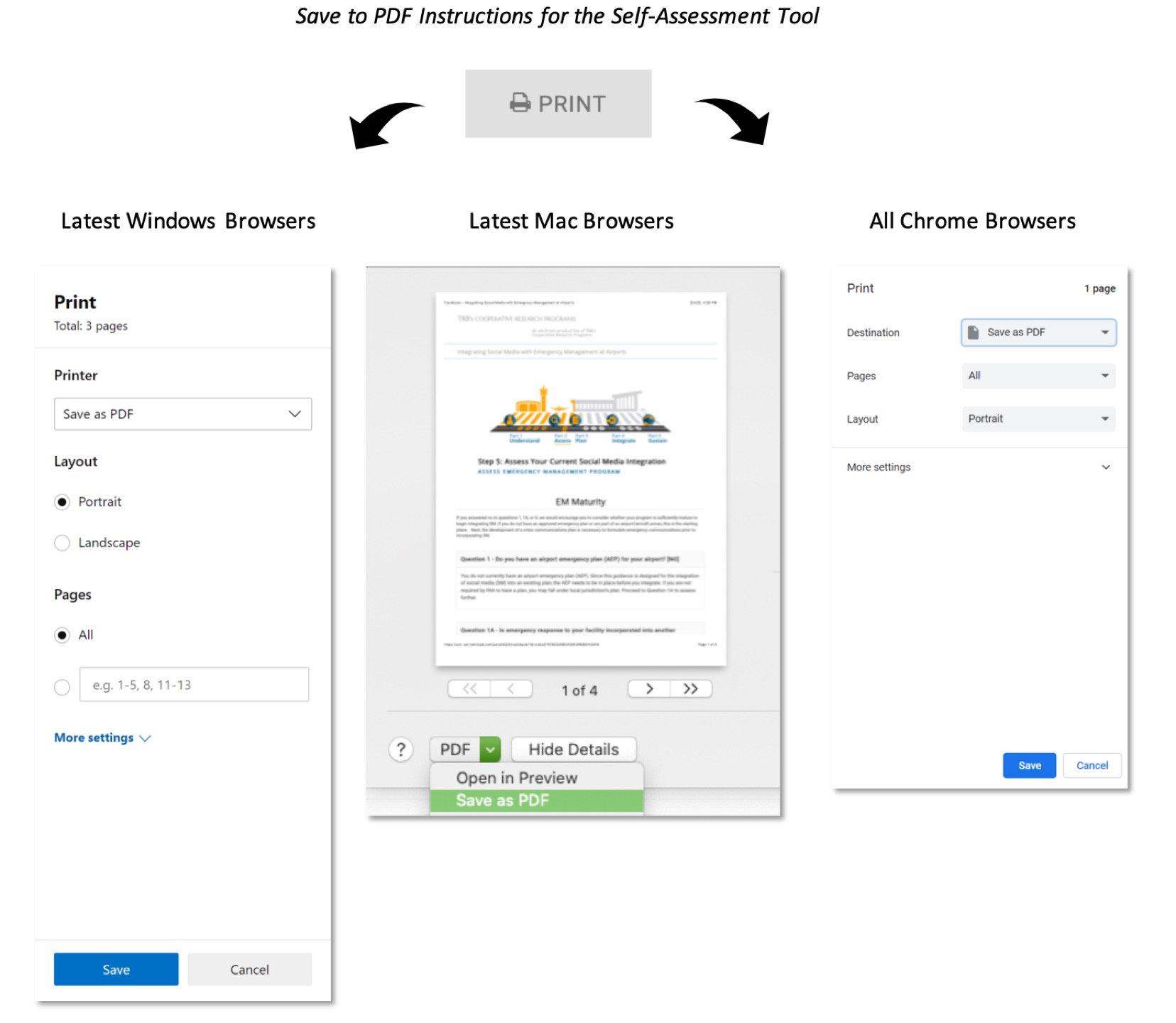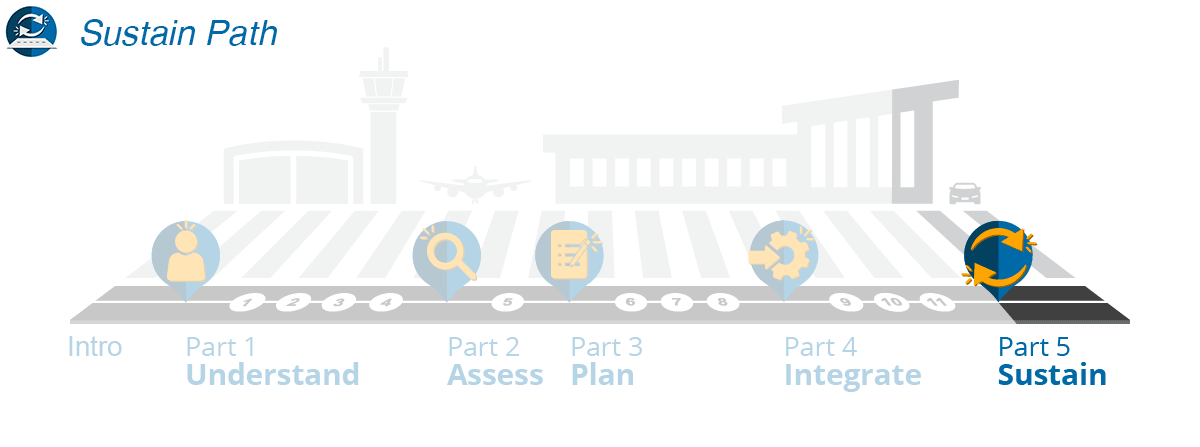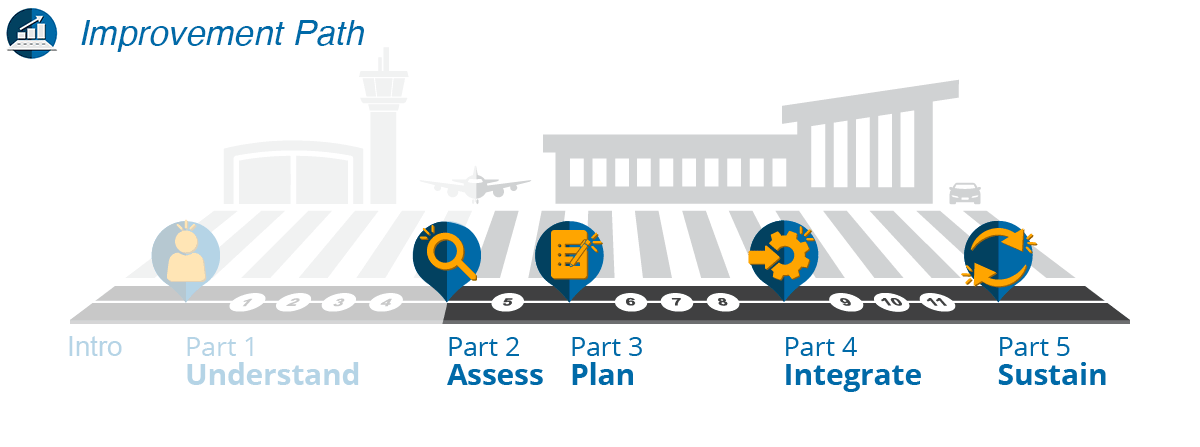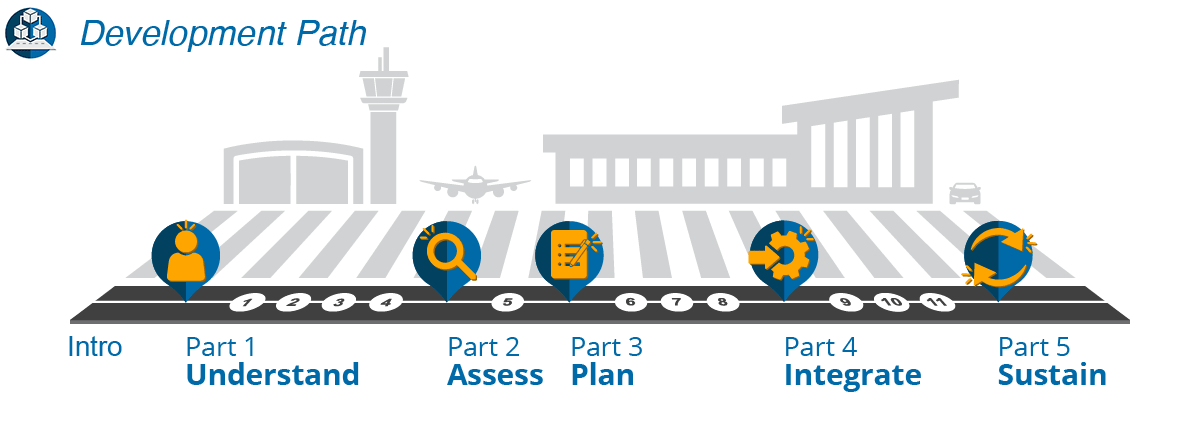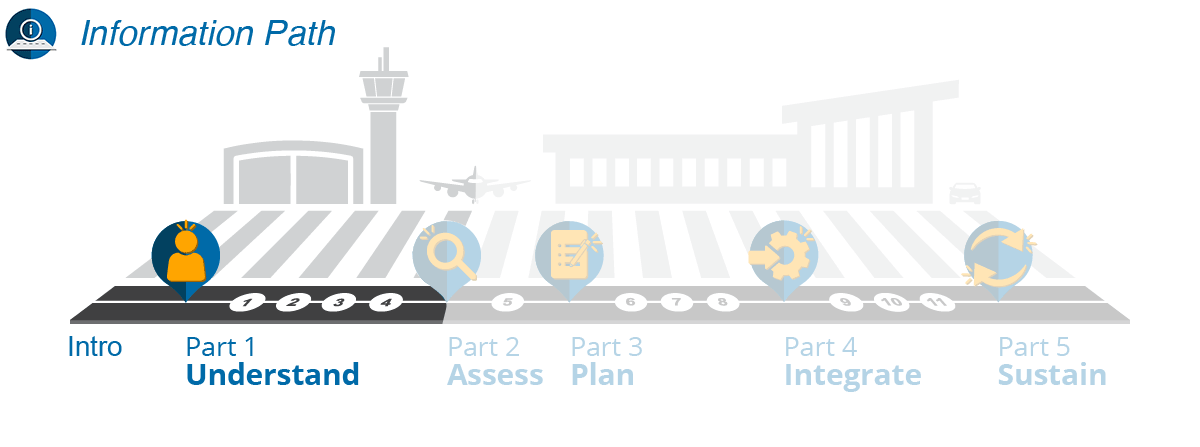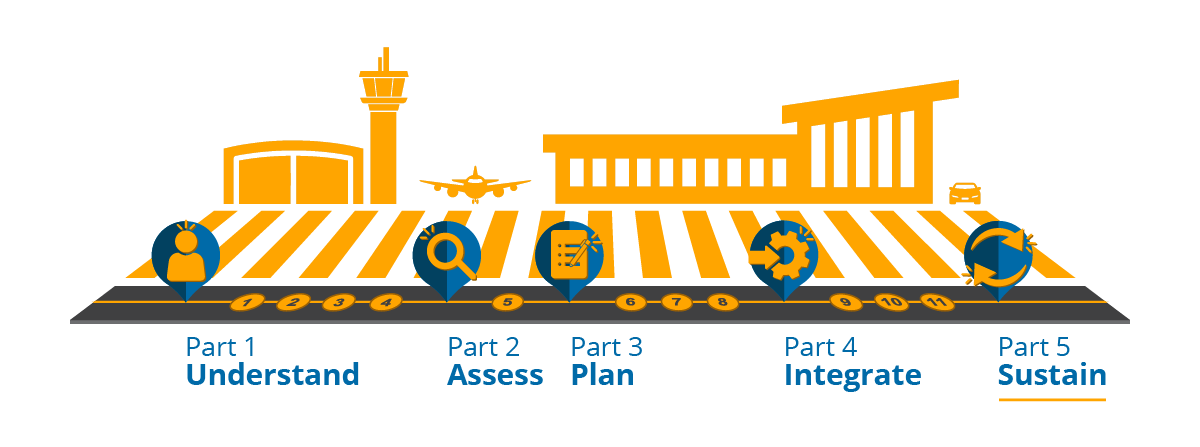
Part 5: Sustain
Improving: How to Strengthen Collaboration for Improved Mutual Benefits
Part of sustaining your program for integrating social media with emergency management (SMEM) is an emphasis on continuous improvement. Without it, your program will start to feel stale, and your stakeholders may lose interest in keeping it going. The key to improvement starts with having the right mindset; you and your stakeholders must have a mindset that values improvement and continually looks for ways to improve through each experience in implementing the program. Improving your program includes the following components:
- Build upon and sustain relationships with your stakeholders
- Collaboratively set expectations and monitor program success
- Improve joint stakeholder training and exercising
Build Upon and Sustain Relationships with Your Stakeholders
Before you can collaboratively look for ways to improve your SMEM program, you must ensure you are sustaining strong relationships with your stakeholders. If you built your program correctly, you should already be regularly interacting with your stakeholders simply by implementing the program. Consider adding purposeful activities to deepen trust among stakeholders such as the following:
- Actively monitor success measures for the effectiveness of your SMEM efforts, share the results with one another, and celebrate successes
- After an incident, conduct debriefs and identify areas in your SMEM program that need refinement
- Review your plans to ensure that all stakeholders are included during the preparation phase
Whatever activities you choose, ensure you are regularly reaching out to all members of your community. This ongoing coordination will not only help you sustain the relationships, but it will also help you identify when a point of contact with a stakeholder group changes. You can then build a relationship with the new contact and ensure they are aware of their role in the SMEM program.
Collaboratively Set Expectations and Monitor Program Success
Improving your SMEM program is a team effort; if the whole team is not on board and not collaborating, you will find it very difficult to improve your program. Even if you are still identifying ways to improve, you need buy-in from your stakeholders to fully implement the improvements. To do this, you should collaboratively reassess your program’s success measures and monitor program success.
Collaboratively Reassessing Success Measures
A great way to improve your SMEM program is by improving the shared success measures you established in Step 9. With your program in place, are the success measures living up to what your team expects out of the program? For example, you should regularly work together to establish realistic expectations of the availability, fidelity, type, and timing of information shared through your SMEM program. Knowing the success measures surrounding availability will cause team members to clearly communicate with each other when they are unable to provide the information expected of them. This consistency will build trust among your stakeholders and keep your program running effectively.
Your level of expertise—as well as that of your community—should grow over time; your success measures will likely change with it. As you reassess these, the following issues provide some important topics for discussion:
- Type, content, and timing of messaging
- Improvement of message template(s)
- The level of precision of specific message content
- Anticipation of the cadence for updating messaging based on type of event
- Updating executives and external stakeholders on what has been accomplished and areas you are working on to improve and using these opportunities to reaffirm support for the program and additional resources
As you do this, try to strike a good balance between expectations that are too low or unreasonably high. Above all, keep expectations aligned with the level of resources you have to support and maintain them.
Monitoring Program Success
With success measures set and stakeholder buy-in, you can now measure your program’s success and look for ways to improve. The best way to measure success is through after-action assessments of response and recovery efforts. For each assessment, include an SMEM operations review of the actions taken by your team alongside your success measures. The result should speak to findings that will guide your community in making appropriate modifications to any of the following:
- Crisis communications and emergency response plans
- Plan objectives
- Policies and procedures
- Agreements/memoranda of understanding
- Training curriculum and/or course content
- Exercise cycle and curriculum
- Resources, tools, and systems integration dimensions as appropriate
One of the most common incident types an airport is likely to experience is irregular operations (IROPS). Use these incidents to improve your coordination with airlines and the Federal Aviation Administration (FAA) and to fine-tune your messaging. Through these events, be sure to track your metrics and reassess your tools to determine opportunities to improve your social media (SM) capability and two-way communication across the community.
Consider reviewing ACRP Report 65: Guidebook for Airport Irregular Operations (IROPS) Contingency Planning (http://www.trb.org/Publications/Blurbs/166569.aspx) and ACRP Report 153: Guidebook for IROPS Stakeholder Communication & Coordination (http://www.trb.org/Publications/Blurbs/174234.aspx), which provide comprehensive strategies and approaches to address these issues. The objective is for the airport community to take effective action that ensures that passenger volumes and associated service demands do not overwhelm the capacity of the service providers.
If you have not recently experienced an emergency/incident, conduct one of these after-action assessments after your team has conducted training or exercises. This can lead to discussions about improvements to your program and success measures.
Beyond your internal team, you should look for opportunities to collaborate with members of your whole community on your program’s success. This will give each organization opportunities to share the methods they use to measure performance and assess trends. It will also shed light on how successful they view your program to be, based on their experience with it. You and the community team will then be in a position to provide the necessary resources to successfully meet the business objectives of the stakeholders.
Improve Joint Stakeholder Training and Exercising
As you look for ways to improve your SMEM program, revisit the Training Plan section in Step 10 and the specific training resources. Based on your plans and recent incidents, determine which training to pursue to add value to the program. As you do this, make a concerted effort to reach out to your community team for joint stakeholder training and exercises. Once trained, personnel will achieve higher proficiency in operating as an effective team through the airport community exercises, i.e., practicing, their integrated crisis communications and emergency response plan.
Conclusion
Once you have identified potential improvements to make to your SMEM program, we encourage you to document these in a location accessible to your stakeholders. From there, provide regular updates on your evaluation and eventual implementation of these improvements. As you do this, keep the “Do 1 Thing” approach in mind and always ensure your program stays within the level of resources available to implement and sustain it.
